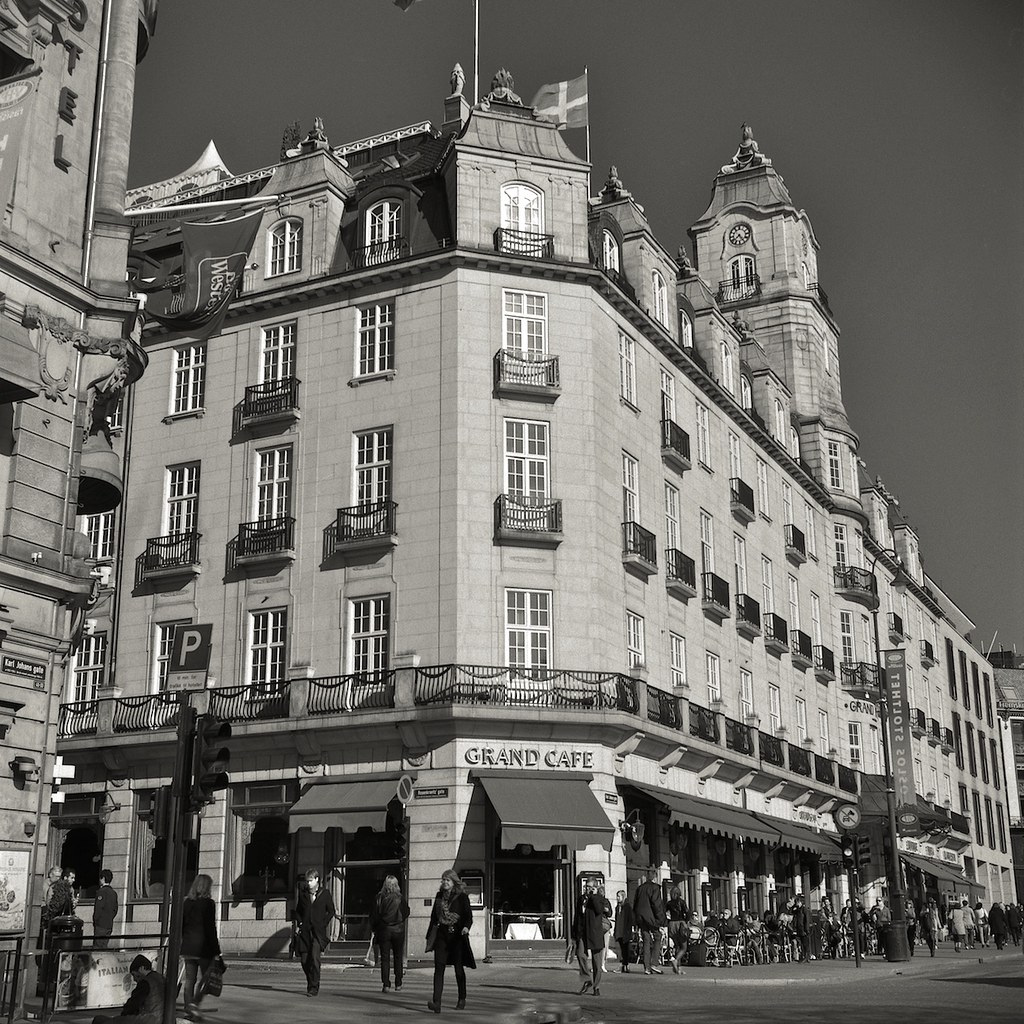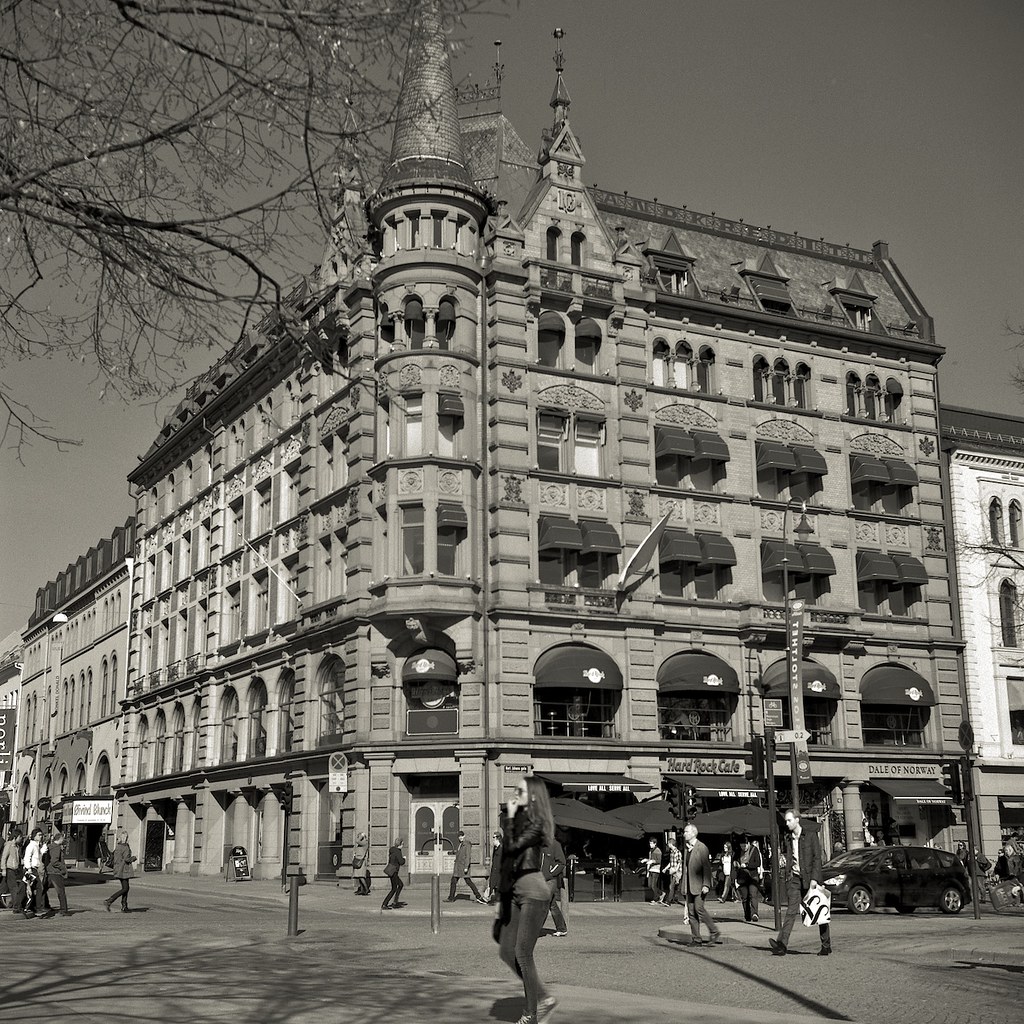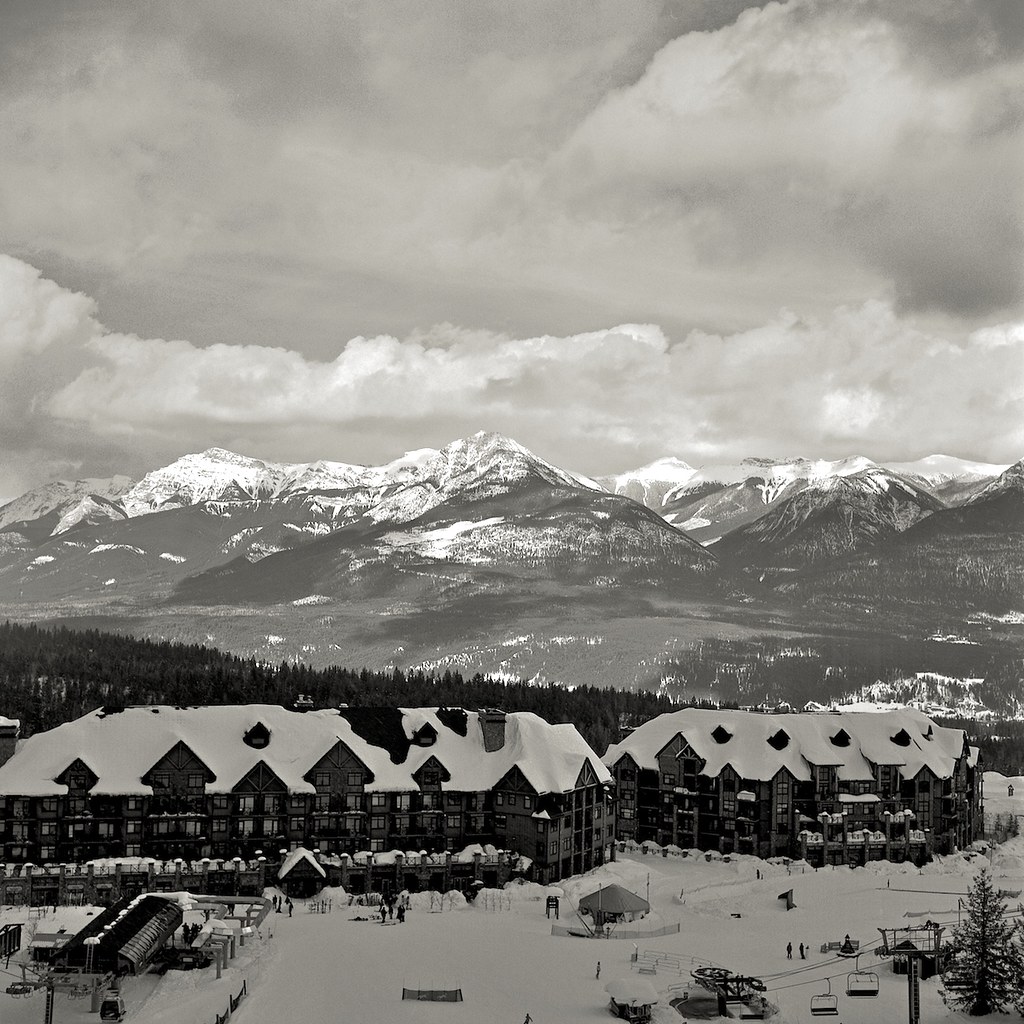The revised recipe is:
Sodium carbonate: 40g/l (down from 54g/l)
Ascorbice acid: 16g/l
Instant coffee (gut rot type): 40g/l
And the results are more than pleasing. Both the technical qualities of the film (medium fine grain, classic grain structure is nice, tonal range and graduation is good, but not brilliant, and high contrasting areas are handled very well) and the developer work very well indeed. The Caffenol-C-M (RS) solution seems to be no less active than the regular sort. I need to scan a roll of TMX also developed in the (RS) version, and compare this to earlier C-M developed rolls to be sure, but I hope to see smoother midtones and maybe finer grain.
The results:
Flexaret Va, Shanghai GP3, EI 160, Caffenol-C-M(RS), Studenten, now housing the Hard Rock Cafe, Oslo, Norway
 |
Flexaret Va, Shanghai GP3, EI 160, Caffenol-C-M(RS), Grand Hotel, Oslo, Norway |



